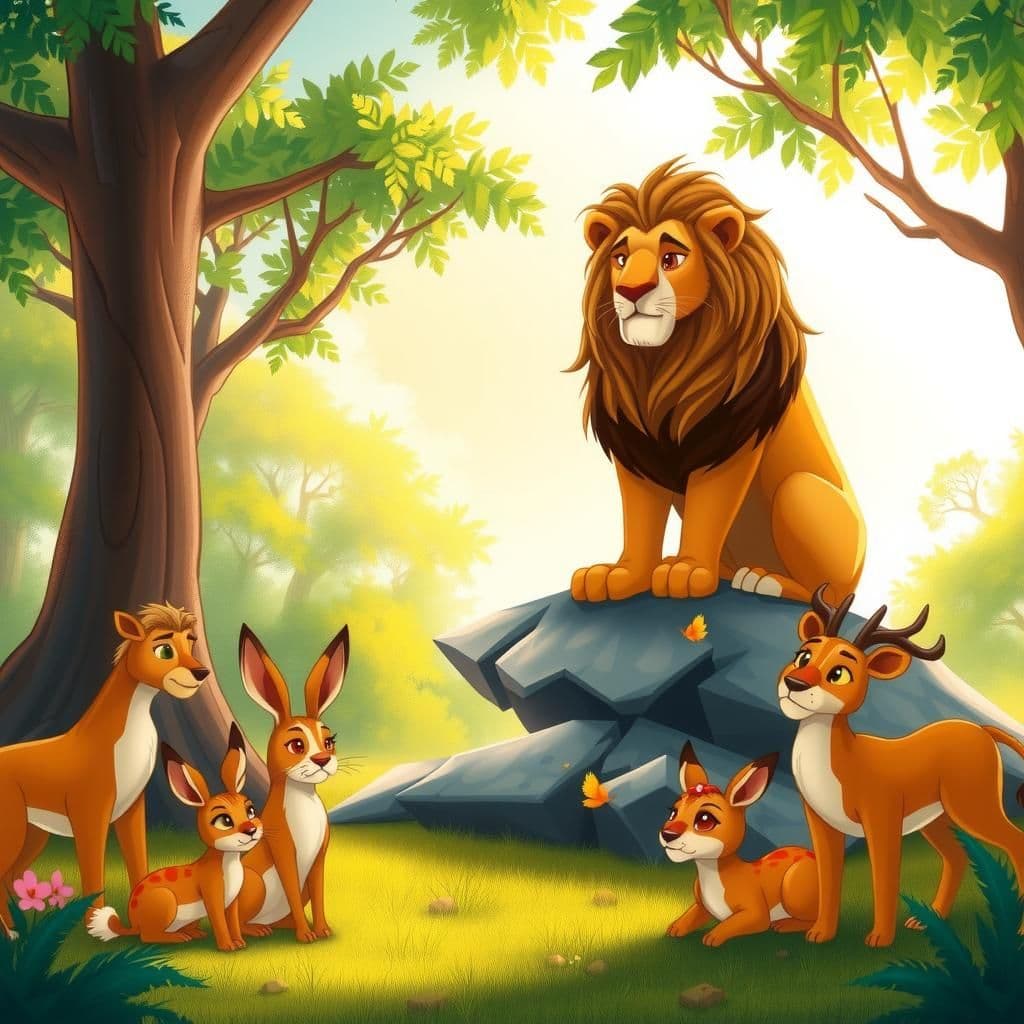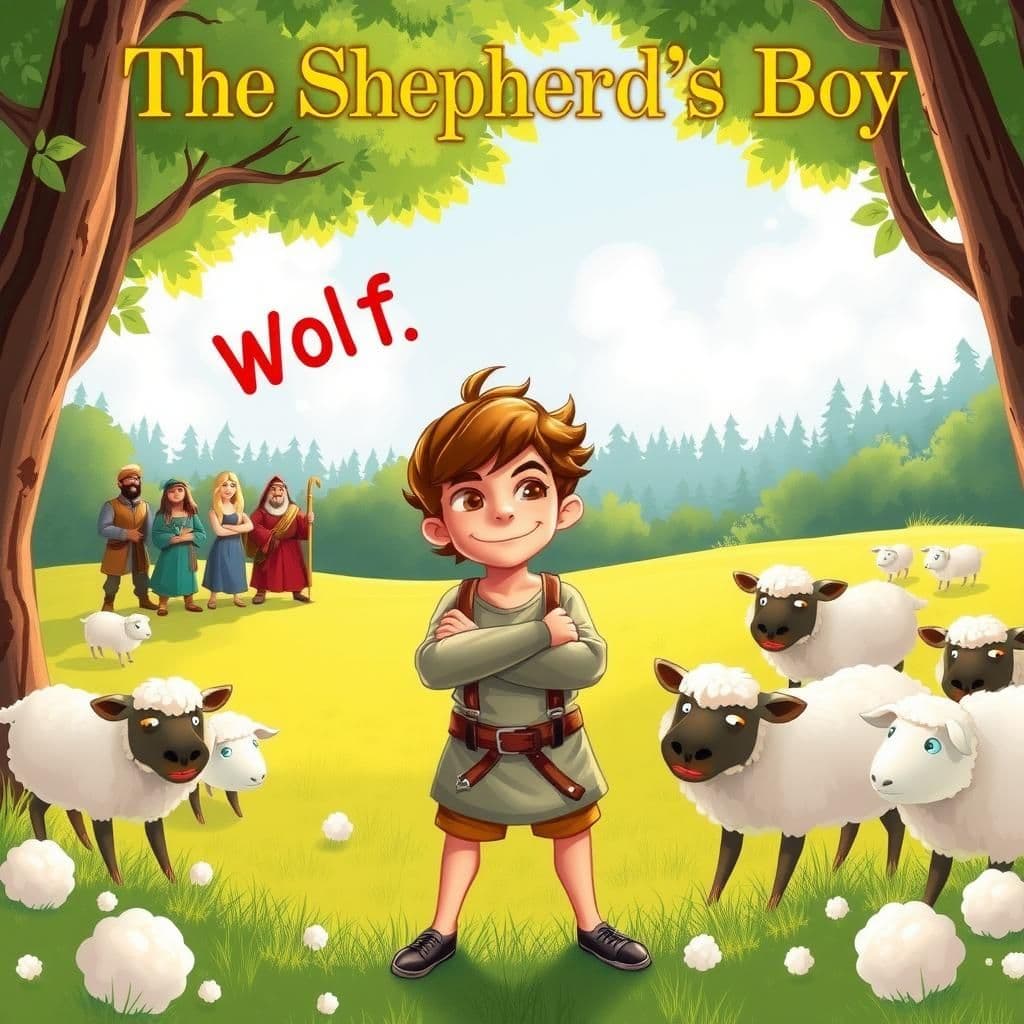The Kingdom of the Lion

Story Summary
In "The Kingdom of the Lion," a just and gentle Lion unites the beasts of the field and forest with a proclamation for a universal league, promising peace among all creatures, regardless of their strength. However, the instinctive fear of the Hare, who longs for safety yet flees in terror, underscores the challenges of true coexistence and highlights the moral complexities in this simple short story. This entertaining moral tale serves as a poignant reminder of the difficulties in achieving harmony, making it a fitting read for class 7.
Click to reveal the moral of the story
The story illustrates that even the most benevolent leadership cannot guarantee harmony among those with inherent differences in power and nature.
Historical Context
This story echoes themes from Aesop's Fables, a collection of moral tales attributed to the ancient Greek storyteller Aesop, which often feature anthropomorphized animals illustrating human virtues and vices. The narrative reflects a common motif in folklore where the natural order is challenged or reimagined, highlighting the tension between strength and vulnerability, and the impossibility of true harmony among predatory and prey species. Such tales have been retold across cultures, emphasizing moral lessons about power dynamics and coexistence.
Our Editors Opinion
This fable highlights the tension between ideals of peace and the underlying instincts of survival, reflecting the complexities of modern life where aspirations for harmony often clash with ingrained power dynamics. For example, in a workplace setting, a manager might promote a culture of collaboration and equality, but if certain team members exploit this openness to dominate discussions or take credit for others' ideas, the intended harmony can quickly unravel, leaving the more vulnerable colleagues feeling threatened and undervalued.
You May Also Like

The Shepherd's Boy
In this fable story with moral, a lonely young Shepherd Boy tricks the villagers twice by falsely shouting "Wolf" to gain their attention. When a real Wolf appears and threatens his sheep, the villagers ignore his cries, believing he is lying again, leading to a loss of his flock. This unique moral story teaches young readers that a liar will not be believed, even when telling the truth, emphasizing the importance of honesty in real-life stories with moral lessons.

The Horse seeking revenge on the Stag
In "The Horse Seeking Revenge on the Stag," a Horse, driven by a desire for vengeance, enlists the help of Man to capture a swift Stag. However, this pursuit of revenge ultimately leads to the Horse's loss of freedom and tragic demise, illustrating a powerful lesson from moral stories: seeking vengeance can come at a great cost, overshadowing what truly matters. This tale serves as one of the best moral stories for children, emphasizing the importance of forgiveness over retaliation.

The Brazier and His Dog
A brazier's beloved dog, who sleeps while his master works, eagerly wakes to beg for food at mealtime. Frustrated, the brazier scolds the dog for being lazy, emphasizing that hard work is essential to earn sustenance. This simple short story with moral highlights the importance of labor, making it an engaging moral tale suitable for personal growth and moral stories for class 7.
Other names for this story
Lion's Peace, Kingdom of Beasts, The Gentle Monarch, Unity in the Wild, Roar of Justice, Harmony in the Kingdom, The Lion's Pact, Beasts United
Did You Know?
The story highlights the irony of peace and equality among natural enemies, illustrating how even the most benevolent intentions can be overshadowed by instinctual fears and the realities of the predator-prey relationship. The Hare's longing for harmony quickly turns to instinctual survival, underscoring the theme that true coexistence is often challenged by inherent nature.
Subscribe to Daily Stories
Get a new moral story in your inbox every day.